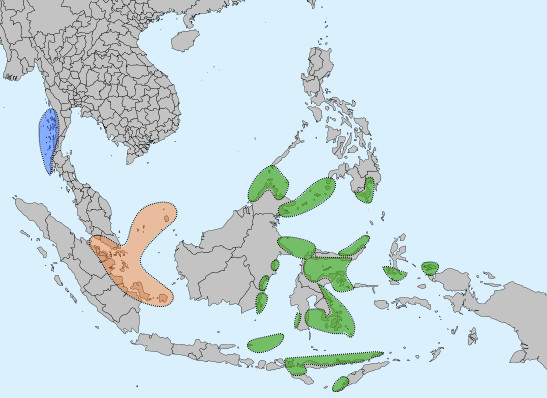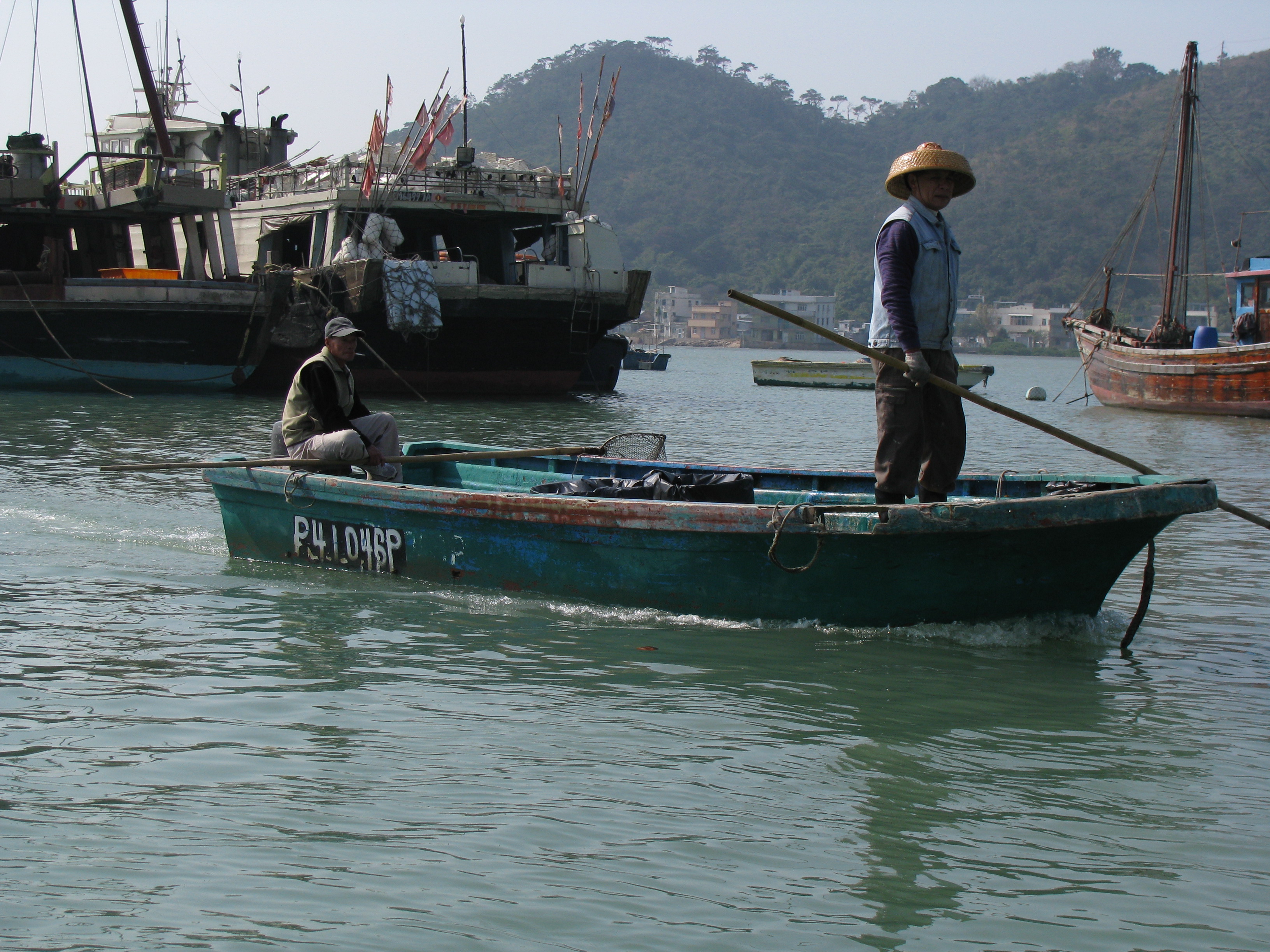|
Sea Nomad (other)
Sea Gypsies, Sea Gypsy, Sea Nomads and Sea Nomad may refer to: Ethnography * Sama-Bajau peoples, a collective name for several ethnic groups in the Philippines, Sabah, eastern Malaysia, Brunei, Indonesia, and parts of Sarawak * Moken, an Austronesian ethnic group who maintain a nomadic, sea-based culture * Orang laut, a group of Malay people living in the Riau Islands of Indonesia * Tanka people, a Han ethnic sub-group that lives on boats in Southern China * Urak Lawoi, coastal dwellers of Thailand * Jalia Kaibarta, an aboriginal Indian fishermen tribe Other uses * ''Badjao: The Sea Gypsies'', a 1957 film directed by Philippine National Artist Lamberto V. Avellana and starring Rosa Rosal and Tony Santos, Sr. * The Sea Gypsies (1978 film), ''The Sea Gypsies'' (1978 film), starring Robert Logan and Heather Rattray * "Gypsies of the sea", Alexander Dumas' description of Catalans in ''The Count of Monte Cristo'' See also * Water tribe (other) * "Ocean Gypsy", a song by Ren ... [...More Info...] [...Related Items...] OR: [Wikipedia] [Google] [Baidu] |
Sama-Bajau Peoples
The Sama-Bajau include several Austronesian ethnic groups of Maritime Southeast Asia. The name collectively refers to related people who usually call themselves the Sama or Samah (formally A'a Sama, "Sama people"); or are known by the exonym Bajau (, also spelled Badjao, Bajaw, Badjau, Badjaw, Bajo or Bayao). They usually live a seaborne lifestyle and use small wooden sailing vessels such as the ''perahu'' (''layag'' in Meranau), '' djenging'' (''balutu''), '' lepa'', and '' vinta'' (''pilang''). Some Sama-Bajau groups native to Sabah are also known for their traditional horse culture. The Sama-Bajau are the dominant ethnic group of the islands of Tawi-Tawi in the Philippines. They are also found in other islands of the Sulu Archipelago, coastal areas of Mindanao, northern and eastern Borneo, Sulawesi, and throughout the eastern Indonesian islands. In the Philippines, they are grouped with the religiously similar Moro people. Within the last fifty years, many of the Fili ... [...More Info...] [...Related Items...] OR: [Wikipedia] [Google] [Baidu] |
Moken
The Moken (also ''Mawken or'' ''Morgan''; ; th, ชาวเล, lit=sea people, translit=chao le) are an Austronesian people of the Mergui Archipelago, a group of approximately 800 islands claimed by both Myanmar and Thailand. Most of the 2,000 to 3,000 Moken live a semi-nomadic hunter-gatherer lifestyle heavily based on the sea, though this is increasingly under threat. The Moken identify in a common culture; there are 1500 men and 1500 women who speak the Moken language, a distinct Austronesian language. Attempts by both Myanmar and Thailand to assimilate the Moken into the wider regional culture have met with very limited success. However, the Moken face an uncertain future as their population decreases and their nomadic lifestyle and unsettled legal status leave them marginalized by modern property and immigration laws, maritime conservation and development programs, and tightening border policies. Nomenclature The people refer to themselves as Moken. The name is used f ... [...More Info...] [...Related Items...] OR: [Wikipedia] [Google] [Baidu] |
Orang Laut
The Orang Laut are several seafaring ethnic groups and tribes living around Singapore, peninsular Malaysia and the Indonesian Riau Islands. The Orang Laut are commonly identified as the Orang Seletar from the Straits of Johor, but the term may also refer to any Malayic-speaking people living on coastal islands, including those of Mergui Archipelago islands of Myanmar and Thailand, commonly known as Moken. Etymology The Malay term literally means 'sea peoples'. The Orang Laut live and travel in their boats on the sea. They made their living from fishing and collecting sea products. Another Malay term for them, (literally 'Straits people'), was brought into European languages as ''Celates''. Distribution Broadly speaking, the term encompasses the numerous tribes and groups inhabiting the islands and estuaries in the Riau-Lingga archipelagos, the Pulau Tujuh Islands, the Batam Archipelago, and the coasts and offshore islands of eastern Sumatra, southern Malaysia Peninsula and ... [...More Info...] [...Related Items...] OR: [Wikipedia] [Google] [Baidu] |
Tanka People
The Tankas or boat people are a sinicised ethnic group in Southern China who have traditionally lived on junks in coastal parts of Guangdong, Guangxi, Fujian, Hainan, Shanghai, Zhejiang and along the Yangtze river, as well as Hong Kong, and Macau. The boat people are referred to with other different names outside of Guangdong (not called Tanka). Though many now live onshore, some from the older generations still live on their boats and pursue their traditional livelihood of fishing. Historically, the Tankas were considered to be outcasts. Since they were boat people who lived by the sea, they were sometimes referred to as "sea gypsies" by both Chinese and British. Tanka origins can be traced back to the native ethnic minorities of southern China known historically as the Baiyue who may have taken refuge on the sea and gradually assimilated into Han culture. However, Tanka have preserved many of their native traditions that are not found in Han Chinese culture. A small numbe ... [...More Info...] [...Related Items...] OR: [Wikipedia] [Google] [Baidu] |
Urak Lawoi
Urak Lawoi ( ms, Orang Laut; th, อูรักลาโว้ย; ) are an Aboriginal Malay people residing on the islands of Phuket Province, Phuket, Phi Phi, Jum (island), Jum, Ko Lanta District, Lanta, Bulon and on Ko Lipe, Lipe and Ko Adang, Adang, in the Adang Archipelago, off the western coast of Thailand. They are known by various names, including Orak Lawoi', Lawta, Chao Tha Le (), Chao Nam (), and Lawoi. The population of approximately 6,000 speak a language related closely to Malay language, Malay but influenced by Thai language, Thai. The Urak Lawoi are one of several southeast Asian ethnicities referred to as "Sea Gypsies" (''chao leh'' in Thai). The local way of life has been changing rapidly in recent years, due to the rapid encroachment of the market economy, and the opening of Tarutao National Marine Park. See also *Sea Gypsies (other) References Ethnic groups in Thailand Nomadic groups in Eurasia {{Asia-ethno-group-stub ... [...More Info...] [...Related Items...] OR: [Wikipedia] [Google] [Baidu] |
Jalia Kaibarta
Jalia Kaibarta (or Jaliya Kaibartta, or: Jāliya Kaibbarta, possibly also: Jalia Kaibartya) is a community comprising people of low ritual status, fishermen, who later acquired respectable caste identities within the larger Hindu fold, helped by their commercial prosperity and Vaishnavite affiliations, through Sanskritisation. They are traditionally engaged in the occupation of fishing and originally belonged to Assam, West Bengal, Odisha and eastern Bihar along with Bangladesh, Nepal, Bhutan. The Kaibartas were initially considered a single tribe divided into two groups, Haliya and Jaliya Kaibarta, where the Haliya Kaibarta are considered to be superior than the latter. Jaliya Kaibartas are categorised as a Scheduled Caste are the second largest among the 16 SCs in Assam under the name Kaibarta/Jalia. Many of the Jalia Kaibarta under the influence of Garamur satradhikar gave up their traditional occupation of fishing and divided themselves into – ''mach mara'' and ''mach na-ma ... [...More Info...] [...Related Items...] OR: [Wikipedia] [Google] [Baidu] |
The Sea Gypsies
Sea Gypsies, Sea Gypsy, Sea Nomads and Sea Nomad may refer to: Ethnography * Sama-Bajau peoples, a collective name for several ethnic groups in the Philippines, Sabah, eastern Malaysia, Brunei, Indonesia, and parts of Sarawak * Moken, an Austronesian ethnic group who maintain a nomadic, sea-based culture * Orang laut, a group of Malay people living in the Riau Islands of Indonesia * Tanka people, a Han ethnic sub-group that lives on boats in Southern China * Urak Lawoi, coastal dwellers of Thailand * Jalia Kaibarta, an aboriginal Indian fishermen tribe Other uses * '' Badjao: The Sea Gypsies'', a 1957 film directed by Philippine National Artist Lamberto V. Avellana and starring Rosa Rosal and Tony Santos, Sr. * ''The Sea Gypsies'' (1978 film), starring Robert Logan and Heather Rattray * "Gypsies of the sea", Alexander Dumas' description of Catalans in ''The Count of Monte Cristo'' See also * Water tribe (other) * "Ocean Gypsy", a song by Renaissance * The Water Gipsi ... [...More Info...] [...Related Items...] OR: [Wikipedia] [Google] [Baidu] |
The Sea Gypsies (1978 Film)
''The Sea Gypsies'', also known as ''Shipwreck'', is a 1978 family adventure film directed by Stewart Raffill and starring Robert Logan and Mikki Jamison. The film's tagline is ''It began as a dream... and became an adventure of a lifetime''. Plot Travis and his two daughters, Courtney and Samantha, set off on a dangerous trip around the world on a sailboat. Along for the trip is Kelly, a journalist who has been assigned to cover the voyage. Also, Jesse, a stowaway, is found aboard adding a fifth person on the trip. Soon, they are shipwrecked on the coast of Alaska and must learn how to survive together in a sometimes dangerous environment. Main cast * Robert Logan as Travis Maclaine * Mikki Jamison as Kelly Zimmerman * Heather Rattray as Courtney Maclaine * Shannon Saylor as Samantha Maclaine * Cjon Damitri Patterson as Jesse * Mark Litke as TV Reporter * Nancy Loomis as Girlfriend See also * '' Across the Great Divide'' * ''The Adventures of the Wilderness Family ''The A ... [...More Info...] [...Related Items...] OR: [Wikipedia] [Google] [Baidu] |
The Count Of Monte Cristo
''The Count of Monte Cristo'' (french: Le Comte de Monte-Cristo) is an adventure novel written by French author Alexandre Dumas (''père'') completed in 1844. It is one of the author's more popular works, along with ''The Three Musketeers''. Like many of his novels, it was expanded from plot outlines suggested by his collaborating ghostwriter Auguste Maquet. The story takes place in France, Italy, and islands in the Mediterranean during the historical events of 1815–1839: the era of the Bourbon Restoration in France, Bourbon Restoration through the reign of Louis-Philippe of France. It begins on the day that Napoleon left his first island of exile, Elba, beginning the Hundred Days period when Napoleon returned to power. The historical setting is a fundamental element of the book, an adventure story centrally concerned with themes of hope, justice, vengeance, mercy, and forgiveness. It centers on a man who is wrongfully imprisoned, escapes from jail, acquires a fortune, and set ... [...More Info...] [...Related Items...] OR: [Wikipedia] [Google] [Baidu] |
Water Tribe (other)
{{disambiguation ...
Water tribe or Water tribes may refer to: People * Bajau people, an ethnic group of the southern Philippines * Bhishti, a Muslim community in northern India and Pakistan * Moken, an Austronesian ethnic group Fictional tribes * Water Tribe in the ''Avatar: The Last Airbender'' franchise * Water Tribe in the Bionicle universe * Water Tribe, a faction in ''Chouseishin Gransazer'' See also * Sea Gypsies (other) Sea Gypsies, Sea Gypsy, Sea Nomads and Sea Nomad may refer to: Ethnography * Sama-Bajau peoples, a collective name for several ethnic groups in the Philippines, Sabah, eastern Malaysia, Brunei, Indonesia, and parts of Sarawak * Moken, an Austronesi ... [...More Info...] [...Related Items...] OR: [Wikipedia] [Google] [Baidu] |
Renaissance (band)
Renaissance are an English progressive rock band, best known for their 1978 UK top 10 hit " Northern Lights" and progressive rock classics like "Carpet of the Sun", "Mother Russia", and "Ashes Are Burning". They developed a unique sound, combining a female Lead vocalist, lead vocal with a fusion of classical music, classical, folk music, folk, rock music, rock, and jazz influences. Characteristic elements of the Renaissance sound are Annie Haslam's wide vocal range, prominent piano accompaniment, orchestration, orchestral arrangements, vocal harmonies, acoustic guitar, bass guitar, synthesiser, and versatile drum work. The band created a significant following in the northeast United States in the 1970s, and that region remains their strongest fan base. The original line-up included two former members of the Yardbirds, Keith Relf and Jim McCarty, along with John Hawken, Louis Cennamo and Relf's sister Jane Relf. They intended to put "something together with more of a classical in ... [...More Info...] [...Related Items...] OR: [Wikipedia] [Google] [Baidu] |
.jpg)


